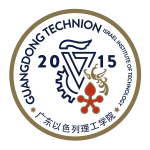14 October 2020
Guangdong Technion - Israel Institute of Technology (GTIIT), China & Technion-Israel Institute of Technology, Israel.
The Physics Program (group of Associate Professor DSc. Dr. Marcelo Ciappina) is looking for 1 PhD student to conduct theoretical research projects in applied mathematics related to attosecond physics. Contract duration: 3 + 1 years.
The Strong Field Approximation (SFA) presents a simple, analytic, and fully quantum theory for the description of the interaction of strong laser fields and matter. Originally developed to treat high-harmonic generation by low-frequency laser fields, it was later extended to tackle, amongst other strong field phenomena, above-threshold ionization (ATI). The SFA recovers the classical interpretation of Kulander et al. and Corkum and clearly explains why the single-atom harmonic-generation spectra fall off at an energy approximately equal to the ionization energy plus about three times the oscillation energy of a free electron in the field. In addition, the theory is able to give a reason for the maximum electron energies in the ATI process as well. The SFA is valid for arbitrary atomic potentials and can be generalized to describe laser fields of arbitrary ellipticity and spectral characteristics. Additional information about the strong field processes is obtained if the saddle point approximation is used. In this way, an interpretation in terms of quantum orbits can be recovered. The mathematical foundation behind the saddle point approximation is the solution of an equation (or a system of them) in a bounded region of a (multidimensional) complex plane. Up to now there is no a general framework to tackle this problem and consequently, particular numerical algorithms should be developed for each case.
The aim of this project is to develop analytical and numerical tools to solve the multidimensional saddle point problem, with emphasis in the strong field processes. The mathematical machinery to solve this problem already exists in the literature for the simplest cases, but it was never adapted for the solution of physical problems related with strong field physics. Having access to a general solution of the saddle point approximation in multi-dimensions, new and unexplored scenarios could be tackled. For instance, we could study, amongst other processes, double ionization in two-electron systems and disentangle the underlying physical mechanisms without the need to solve the full dimensional time dependent Schrödinger equation.
Strong field phenomena, numerical modeling, attosecond physics, complex variable, applied mathematics
- Master degree (or equivalent) in Physics or Applied Mathematics (essential)
- Strong background in applied mathematics and complex variable (preferable)
- Strong interest in numerics (essential)
- Strong interest in programming (essential)
- Strong interest to work temporarily at research institutes in China, Europe and Israel (essential)
- Good communication skills, good command of English (essential)
- Ability to work independently as well as in a team environment (essential)
- Ability to author scientific reports and co-author scientific publications (essential)
- The PhD candidate must fulfill the requirements for admission to the Technion Graduate School and needs to comply with its regulations leading to the PhD/Master degree: https://graduate.technion.ac.il/en/prospective-students/

